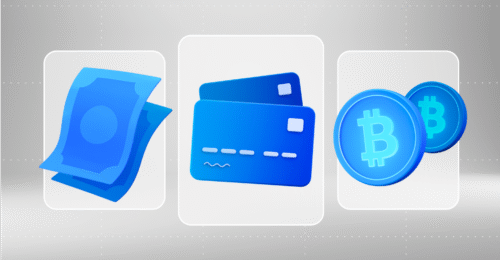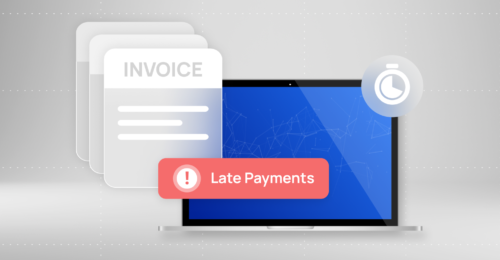- Payment gateway
- Blog
- The Way How Consumers Pay: Key insights for 2025
The Way How Consumers Pay: Key insights for 2025
In 2025 a variety of payment options is among the strongest drivers for consumers to make a purchase. Over 52% of all digital transactions will be conducted through embedded payments systems and digital wallets by 2026. In this article we will explore the key reasons why the way consumers pay matters.
Key numbers of the Digital Payments
The greater convenience, speed, and feeling of security of digital payments have completely transformed the character of the “checkout” experience. In 2025, the most conspicuous trends are:
- Worldwide digital payment volume is expected to reach $20.09 trillion during the year
- 2.3 billion consumers worldwide will be relying on digital wallets by 2025
- 52%+ of all the world’s online transactions will be powered by digital wallets by 2026
- 67% of consumers say they leave purchases behind when their preferred method of payment is not accepted
Among the most important developments are:
- PIX, Brazil’s platform, now handling over 140 million customers and processing over $200 billion monthly
- India’s UPI, which handled over 74 billion transactions in 2022 and is growing globally
- Kenya’s M-Pesa, handling nearly 50% of all local transactions digitally
These systems are part of a broader trend: QR code and digital wallet instant payments are the rising go-to payment method in day-to-day consumer spending. The convenience, speed, and trust inherent in these systems are shaping consumer expectations globally. The number of digital wallet users globally will total over 5.2 billion by 2026, or over 70% of all online-capable adults, Juniper Research predicts.
Payment Friction is Lost Revenue
Cart abandonment continues to plague even the most loyal online buyers, as of 2025 global averages remaining at around 70% across categories. Of the top five reasons individuals abandon checkout:
- Unexpected payment failure
- No support for preferred payment method
- Payment security issues
- Aggravating payment form process
- Site isn’t mobile payment friendly
Trust remains a leading payment choice driver among consumers. It is no longer the property of logos or certification. Consumers trust systems that offer transparent terms, instantaneous fulfillment, and post-purchase ownership.
Surveys as quoted showed that:
- 87% of consumers say they feel more comfortable paying via a digital wallet than entering card details into a website
- 91% indicate that transparency regarding refund terms and installment terms drives payment method decisions
- 78% indicate they’re likely to make repeat buys from merchants offering digital-first refunds and receipts
That means digital payments must not just be secure, they must be perceived to be secure, with flows and interfaces that clearly communicate confirmation, ownership, and optionality. To businesses, this is not just secure APIs and encryption. It is front-end design that ensures confidence and back-end architecture that conducts refunds, installments, and payment status updates in real-time.
In 2025, online transaction failure rates worldwide vary from 7% to 13% by market, by methodology. They include declines due to authentication failure, insufficient funds, expired credentials, and timeouts. The impact is unequivocal:
- $1.6 trillion in world lost sales annually due to cart abandonment due to failed payment attempts
- Over 30% of shoppers say they won’t try again on a purchase if the first-time online payment is declined
- 47% of customer complaints to businesses are about problems that are linked to the payments process
More importantly, failures damage repeat business in the long term. A customer who experiences one payment failure is 64% less likely to return to the same company in 60 days. These figures confirm that payment infrastructure stability and reliability are not a choice. Businesses must approach their checkout process as a valuable business asset, rather than a technical requirement.
The Chargeback issues
By 2025, they are a real threat to digitally native companies, particularly to recurring billing, subscription, or non-typical payment scheme-reliant companies.
Key facts:
- $15 billion in losses worldwide in 2025 from fraudulently charge-backing
- 86% of chargebacks are first-party fraud
- For every $1 charge-backed, the total cost to a merchant is $3.75 on average
- Over 67% are intangible digital services or products that cannot be physically confirmed to have been delivered
The expansion is not only fraud, but consumer expectation of experience as well: vague descriptors, asymmetric refunding processes, and non-real-time confirmation all result in customer-funnel disputes.
Prevention involves merchants having:
- End-to-end payment visibility
- Granular transaction logs
- Proactive orchestration flows for disputes
- Real-time user notifications of status changes
Payment Infrastructure: Your Bottleneck to Growth or Advantage
Your payment infrastructure’s performance in 2025 will dictate how effectively your:
- Conversion rate
- Fraud rate
- Operational cost per transaction
That is why forward-thinking companies are investing in modular, compliant, and updatable payment stacks. Here is what really matters:
Modular Architecture
Your payment infrastructure needs to be capable of handling method switching and integration, fraud capability, processor replacement, and compliance rule updates without full replatforming. This is essential for scaling across:
- Local rails across several markets
- Regulatory regimes
- Consumer expectations
Availability and Redundancy
Your system needs to be able to take payments 24/7 uninterrupted. This requires:
- Failover gateways
- Redundant transaction pipelines
- Active real-time decline/error monitoring
Each minute of payment downtime costs enterprise merchants $10,000 to $42,000 in lost sales, depending on volume.
Real-Time Execution
Refunds, confirmations, and disputes need to happen in real-time. 5-minute processor businesses have 68% fewer support tickets and 43% better repeat conversion.
Granular Audit Trails
All transactions, events, and interactions need to be:
- Logged
- Timestamped
- Exportable
Retainable
This is not only about internal QA, it’s about regulation compliance in regulated markets. Without audit-ready architecture, license acquisition and renewals are a high-risk game.
Not everyone is capable of dealing with the complexity of the payment requirements today. Businesses need more than just route transactions. They need a partner who will deliver conversion, compliance, and control. An exceptional partner such as Transferty fills that gap.
Transferty offers:
Advanced Refund Orchestration
Real-time refund flows in compliance with regulatory needs and customer expectations. Money is returned to the source instantly, and open logs available to merchants and buyer.
Chargeback Management
Features to prevent, reduce, and resolve disputes at an early stage:
- Early warning triggers
- Intelligent descriptor logic
- Root cause analytics
Multi-Method Routing and Local Rails
Transferty facilitates global wallets and local bank integrations for optimal acceptance and localized compliance overlays.
Intelligent Transaction Monitoring
Visibility into:
- Decline rates
- Risk patterns
- Refund cycles
- Fraud triggers
Conclusion
By 2025, businesses aren’t just valued on what they provide, but how consumers pay, receive refunds, manage purchases, and have problems solved. Conversion. Retention. Risk. Growth. They all depend on your payment strategy. That’s where Transferty’s different. It’s not a question of being up and running or compliant, it’s about being ready, responsive, and optimized to thrive in a more expectation-driven marketplace with a greater regulatory burden. With Transferty, you don’t just process payments. You open up customer trust, power growth, and infuse resilience into your core business processes.










